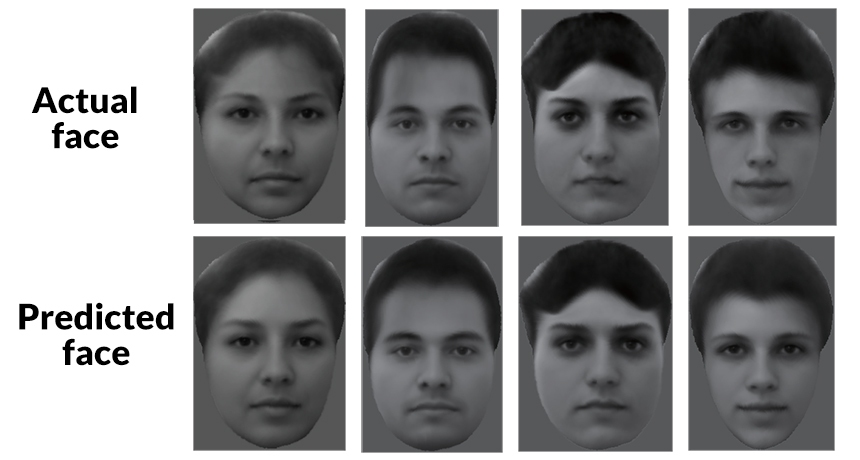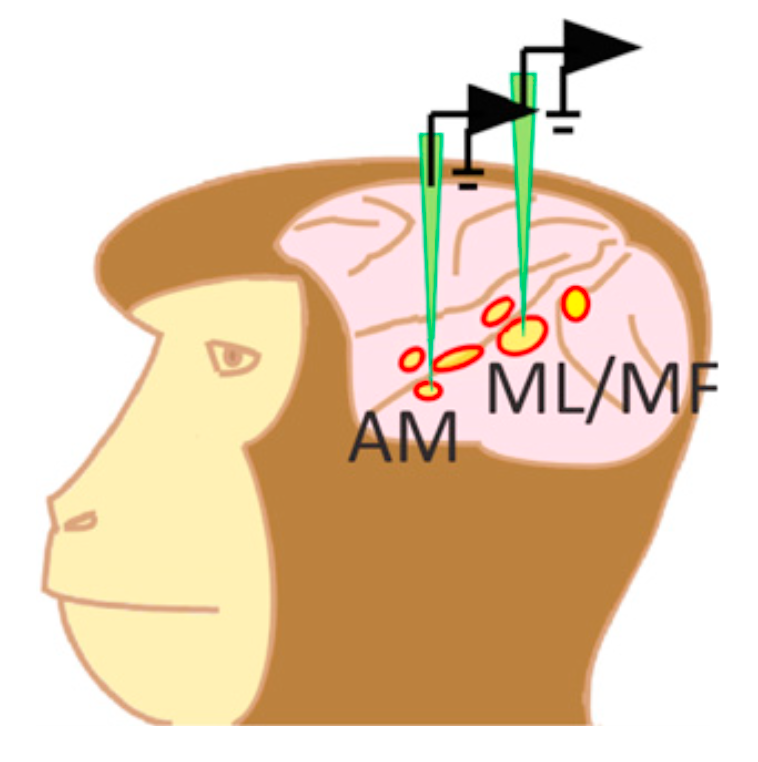Surprisingly simple coding of individuals in the brain produces only 205 neurons.

The brain has an excellent ability to distinguish between faces and other complex objects. For several decades, scientists have been struggling unsuccessfully at the task and trying to understand how this recognition happens - how images are encoded and stored in the brain. According to generally accepted concepts, the process of recognition (identification of objects) occurs in the inferior temporal cortex, that is, the inferotemporal zone of the brain. But it still remained unclear what role individual neurons play in data coding and how many neurons are actually involved in the process.
Two biologists from the California University of Technology published a scientific paper that largely sheds light on how the brain of primates, including humans, works. Scientists believe that they have decoded the code that encodes information about individuals in the brain. The proof is that scientists were only able to restore (guess) the faces that the monkey sees (and, accordingly, the person) by a signal from the brain.
Experts conducted an experiment using magnetic resonance imaging, reading the signals of neurons in the cortical region of macaques, which is responsible for identifying objects. During brain scans, 2000 macaques were shown to 2000 slightly different faces of people. Determining the differences in the activity of neurons in the visual processing of different individuals, scientists were able to make assumptions about how the signal is encoded. Apparently, the system of processing visual information of macaques is very similar to human. According to the results of the study, only 205 (!) Neurons of the brain are enough to encode information about the faces (they were called "facial neurons").
')

Scientists have learned how to predict which face the macaque sees by reading the signal from the 200 "facial neurons" of its brain. This proves that they correctly identified the cipher that encodes the facial characteristics of these neurons.
In social primates, such as macaque and man, evolution has developed a special mechanism for the rapid recognition of faces, because the survival of an animal in a social group depends on this skill - we must instantly distinguish friends from strangers. A second delay can cost life, so the brain learned to solve this problem quickly and efficiently (that is, those who could perform the task quickly and efficiently survived).
It would seem logical to single out one neuron for each face, because the brain actually has specific neurons that respond to specific people (they are called Jennifer Aniston cells , because they were discovered in a patient with epilepsy, whose brain reacted in exactly this unique way) Jennifer Aniston). But no, face recognition does not work in the general case, because it needs to process, including faces that he has never seen before, and the identification of “friend or foe” is also important here.
Our facial recognition system in the brain consists of clusters of cortex of at least 10 thousand neurons. In each hemisphere there are six such clusters, they are located near the ear.

As soon as the face of another person comes into view of a person, the electrical signal immediately activates neurons in this area, it passes through five or six named clusters and is processed in each of them before it reaches “facial neurons”. Thus, in the latter, only high-level processed information about the specific characteristics of the face is stored. And these approximately 205 neurons encode face information in an incredibly simple and abstract way.
The key feature of coding information about people in the brain is a combination of the dimensions of the face and individual objects on the face (inter-eye distance, etc.). In total, the brain takes into account about 50 such parameters when recognizing faces. In such a "facial space" almost any practically admissible number of people fits, so the brain cannot confuse two faces. According to scientists, for "facial neurons" there is a kind of pattern - something like a "middle face", and the response of a neuron to a new face is the difference of each of the 50 characteristics from this "base".
During the experiment, scientists from the California University of Technology were able to simulate individuals who differ so minimally and specifically that the difference in the signal is just one neuron. That is, they were able to understand which neuron is responsible for which characteristic in face recognition. Each "facial neuron" reads a combined vector of about six such parameters. For example, in one of the parameters, a person differs from “base” by five points, in another parameter - by minus seven points. The signal from 205 cells together creates a unique pattern of a particular person.
Changing the shape of the face by changing the 50 key characteristics
As already mentioned, scientists have learned to identify which characteristics are encoded by which neurons. They were able to synthesize faces to which specific neurons would not respond, and even guess what face the macaque sees, simply by a signal from the "facial neurons."
Experiment and conclusions of scientists need to be repeated and verified, but if they turn out to be true, then we can understand better a bit the encryption system used in that complex computing system, which is the brain of humans and other primates. This discovery may find practical application in the field of robotics and suggest new approaches in the development of computer vision systems.
“Hacking a face recognition code will definitely be important,” said Brad Duchaine, an expert in facial recognition at Dartmouth University. Most importantly, scientists have received a sign that image recognition in the brain works according to clear and understandable rules. Indeed, recent advances in the field of neural networks have shown that after training a neural network, a person often cannot understand to which stimuli a neural network reacts - this is a kind of “black box” that functions according to incomprehensible rules. There are fears that the human brain may be an equally incomprehensible system. Fortunately, this was not the case.
The scientific work was published on June 1, 2017 in the journal Cell (doi: 10.1016 / j.cell.2017.05.011), pdf .
Source: https://habr.com/ru/post/370521/
All Articles